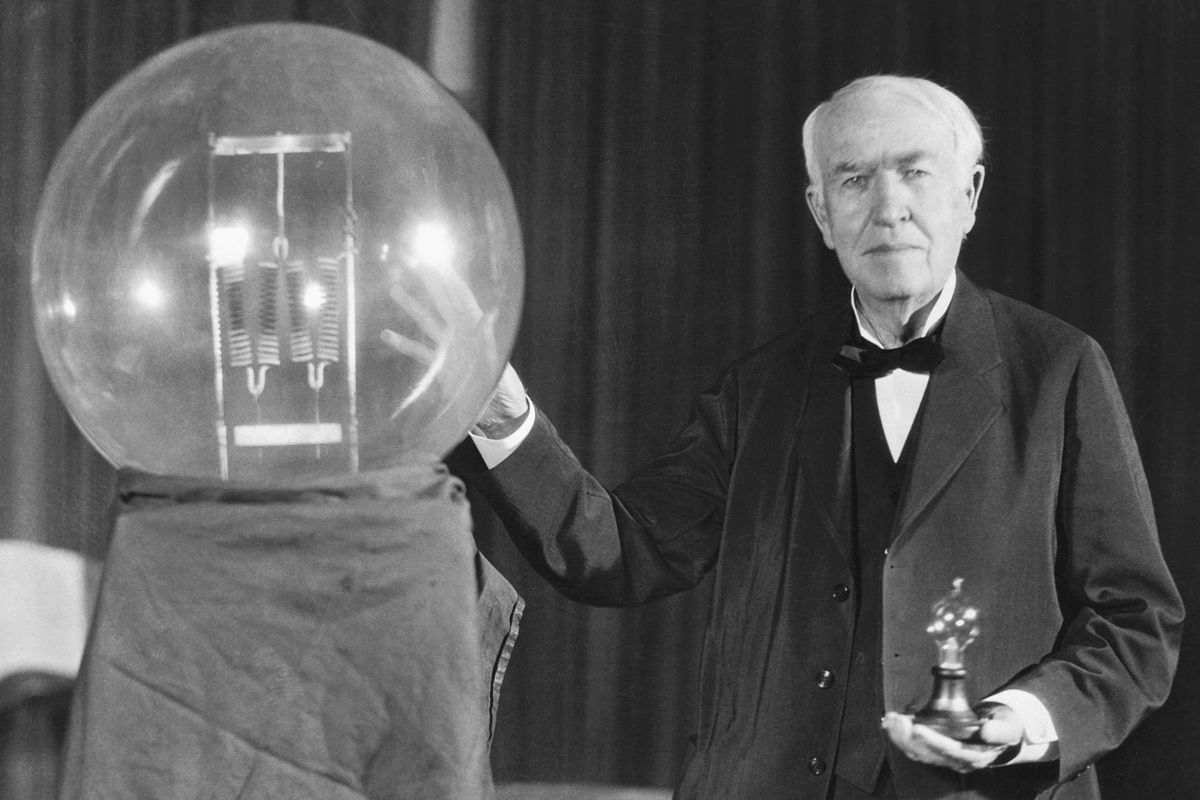Introduction to Thomas Edison
theinvented.co – Thomas Edison is one of the most influential inventors in history. Known for his contributions to the development of electric light, sound recording, and motion pictures, he left a lasting impact on modern technology. Edison held over 1,000 patents, revolutionizing industries and shaping the way we live today.
Read More: Industrial Revolution: History, Development, and Impact
Early Life and Education
1. Childhood and Curiosity
Born on February 11, 1847, in Milan, Ohio, Thomas Edison showed an early interest in science and technology. Although he had little formal education, his self-learning and experimentation set the foundation for his future success.
2. First Steps in Invention
As a teenager, Edison worked as a telegraph operator, where he developed an understanding of electrical engineering. His early work in telegraphy led to his first patents and marked the beginning of his journey as an inventor.
Read More: The Invention of Democracy: How Ancient Greece Shaped Politics
Major Inventions of Thomas Edison
1. The Electric Light Bulb
One of Thomas Edison’s most famous inventions is the electric light bulb. While he did not invent the concept, he improved the design and efficiency by creating a long-lasting filament. In 1879, Edison successfully demonstrated the first practical incandescent light bulb, paving the way for the widespread use of electricity.
2. The Phonograph
In 1877, Edison developed the phonograph, a device that could record and play back sound. This invention marked the birth of the music industry and laid the groundwork for future advancements in audio recording.
3. Motion Pictures
Edison’s contribution to the film industry was significant. He invented the Kinetoscope, an early motion picture device that allowed people to watch short films. His work in moving images eventually led to the development of the modern film industry.
Edison’s Impact on Industry and Society
1. Establishing General Electric
To commercialize his inventions, Edison founded Edison Electric Light Company, which later became General Electric (GE)—one of the largest technology companies in the world. His innovations in electricity distribution led to the establishment of power grids, making electricity accessible to homes and businesses.
2. Revolutionizing Communication
Thomas Edison improved telegraph and telephone technology, making communication more efficient. His contributions helped shape the development of modern telecommunications.
3. Influence on Scientific Research
Edison’s Menlo Park Laboratory became a hub for innovation and scientific research. His approach to systematic invention inspired the establishment of research and development (R&D) centers, which are still used by companies today.
Challenges and Controversies
1. Competition with Nikola Tesla
Thomas Edison had a well-known rivalry with Nikola Tesla, particularly over direct current (DC) vs. alternating current (AC). Edison promoted DC power, while Tesla and George Westinghouse supported AC power, which ultimately became the standard for electricity distribution.
2. Business Strategies and Ethical Concerns
While Edison was a brilliant inventor, some critics argue that he used aggressive business tactics, such as patent lawsuits and market monopolization, to maintain control over his inventions. Despite this, his contributions to technology remain undeniable.
The Legacy of Thomas Edison
1. Innovations That Changed the World
Edison’s inventions laid the foundation for modern electricity, entertainment, and communication industries. His impact can still be seen in lighting systems, recorded music, and film technology.
2. Inspiration for Future Inventors
Edison’s philosophy of “genius is 1% inspiration and 99% perspiration” continues to inspire inventors and entrepreneurs worldwide. His work ethic and determination serve as a model for those in science, engineering, and business.
3. Museums and Memorials
Today, many museums and historical sites honor Thomas Edison, including Edison National Historical Park in New Jersey, where visitors can explore his laboratory and inventions.
